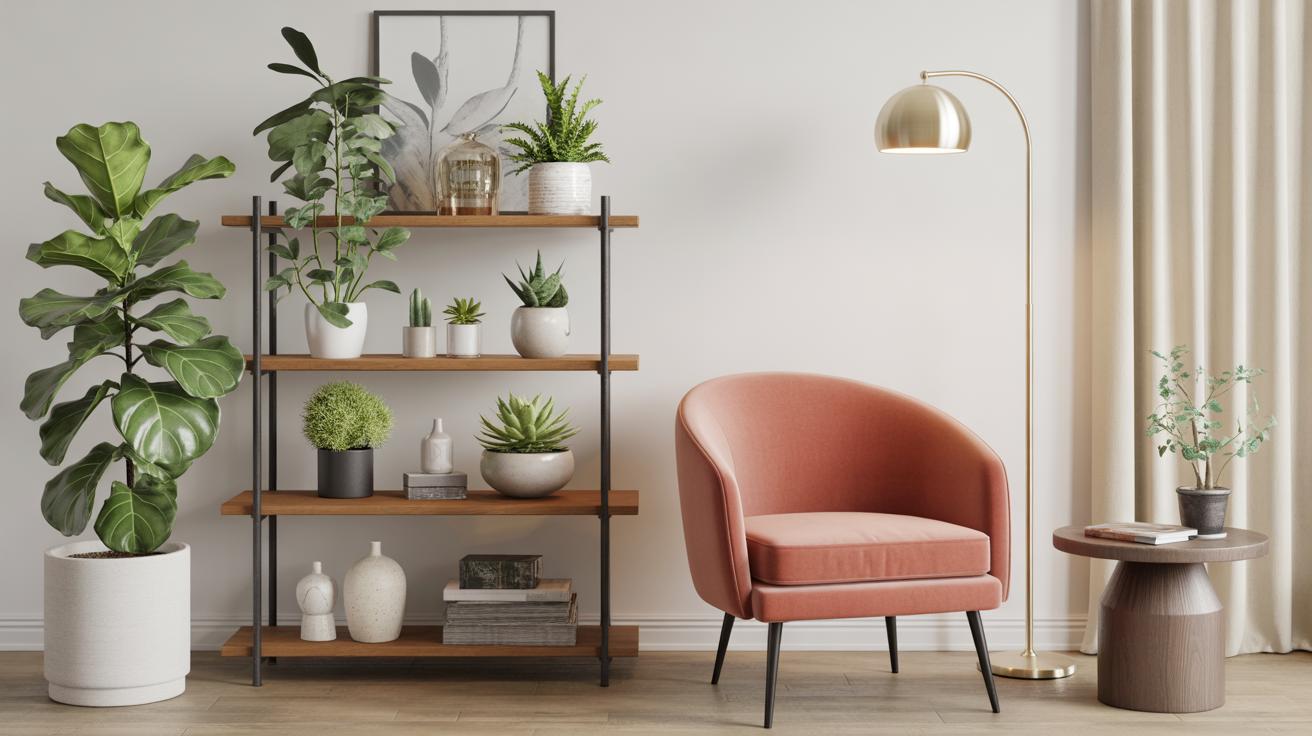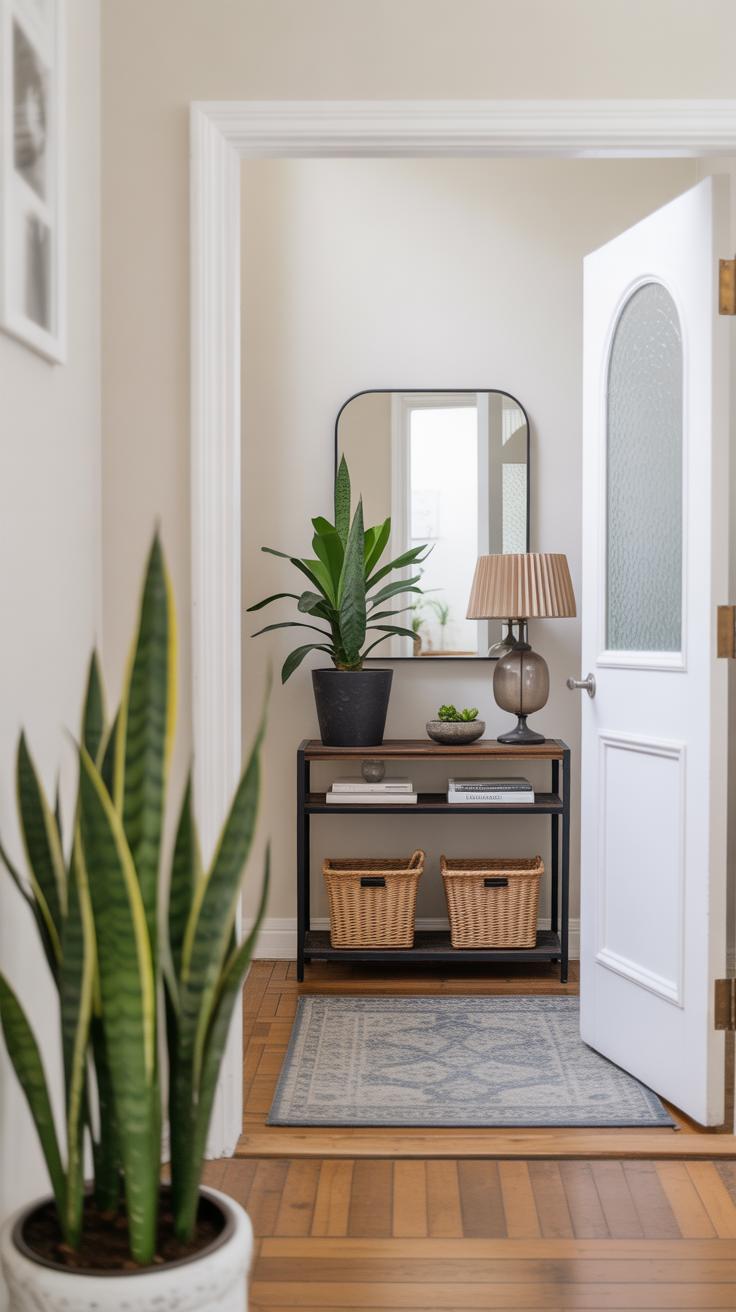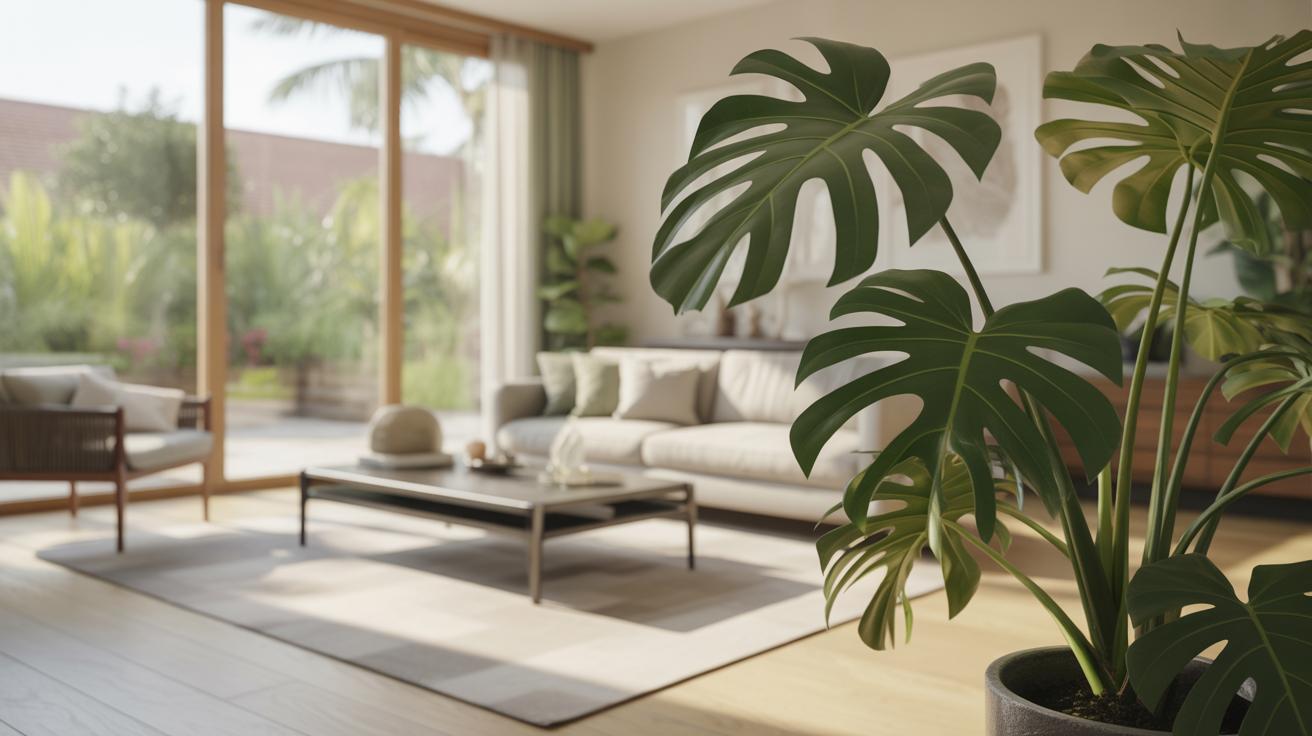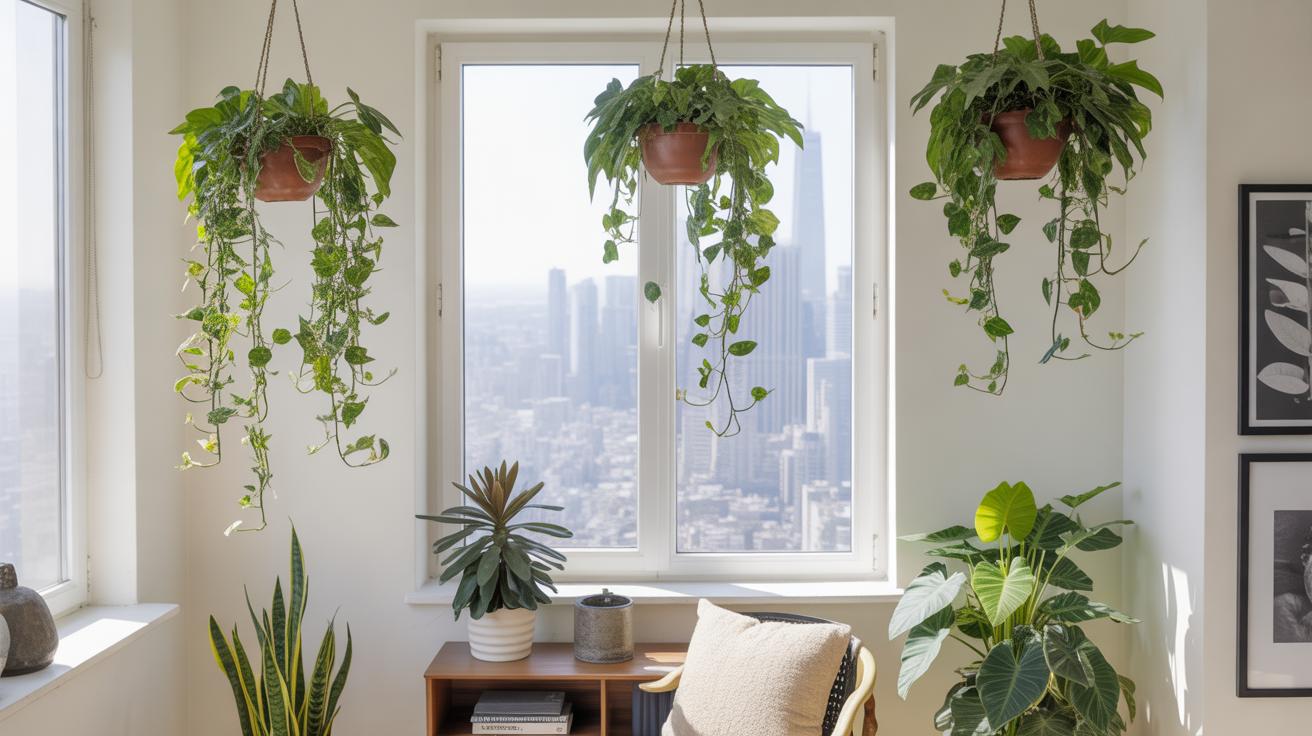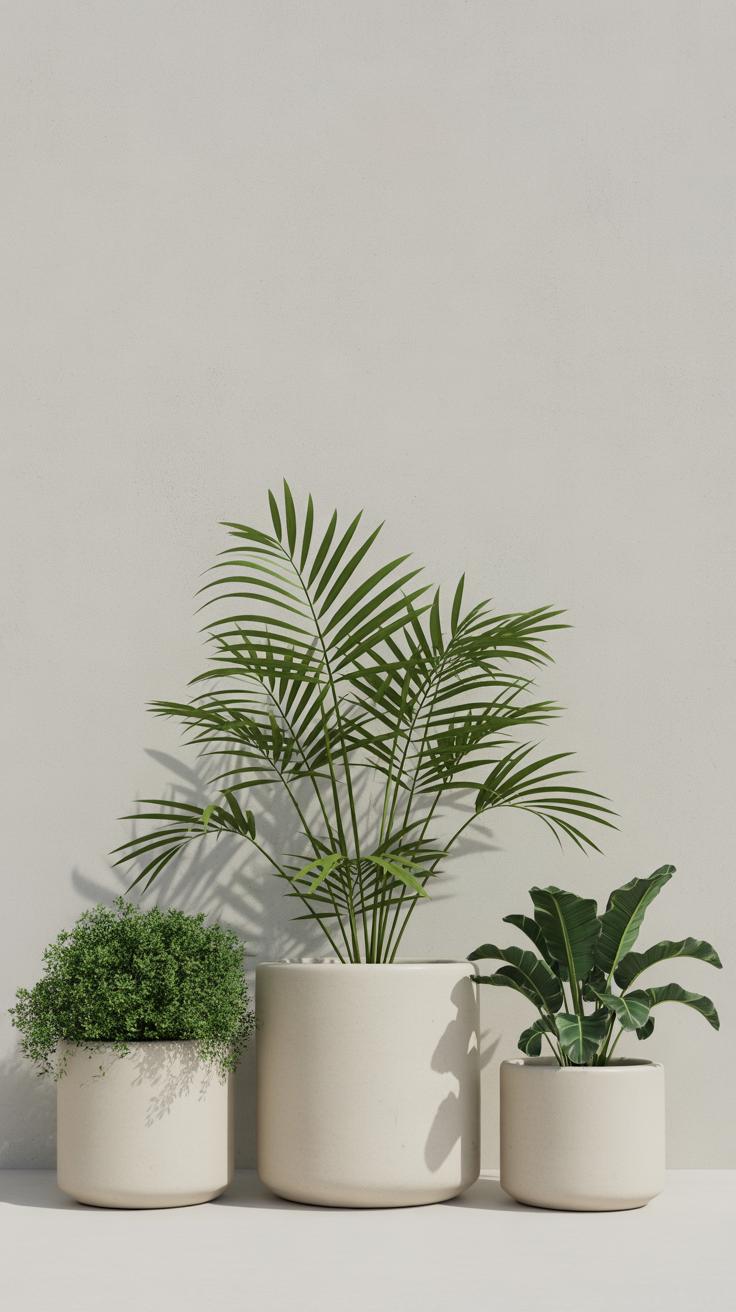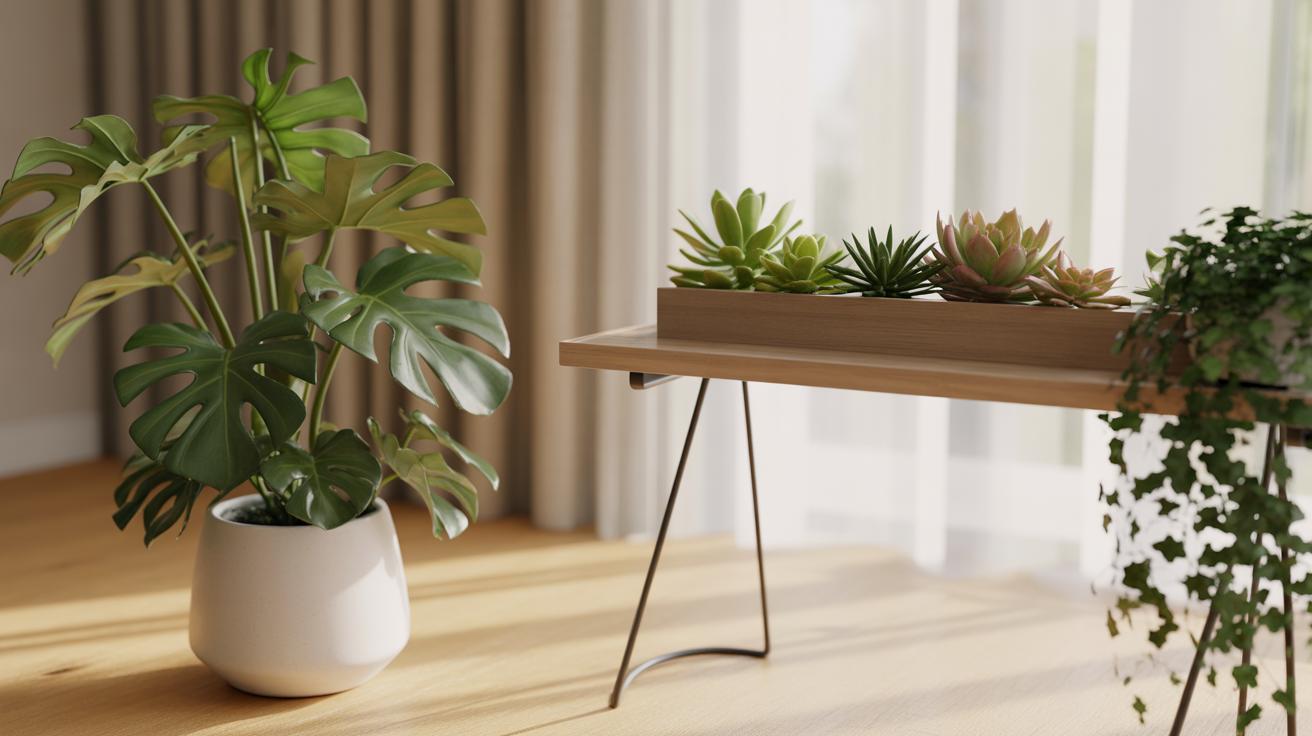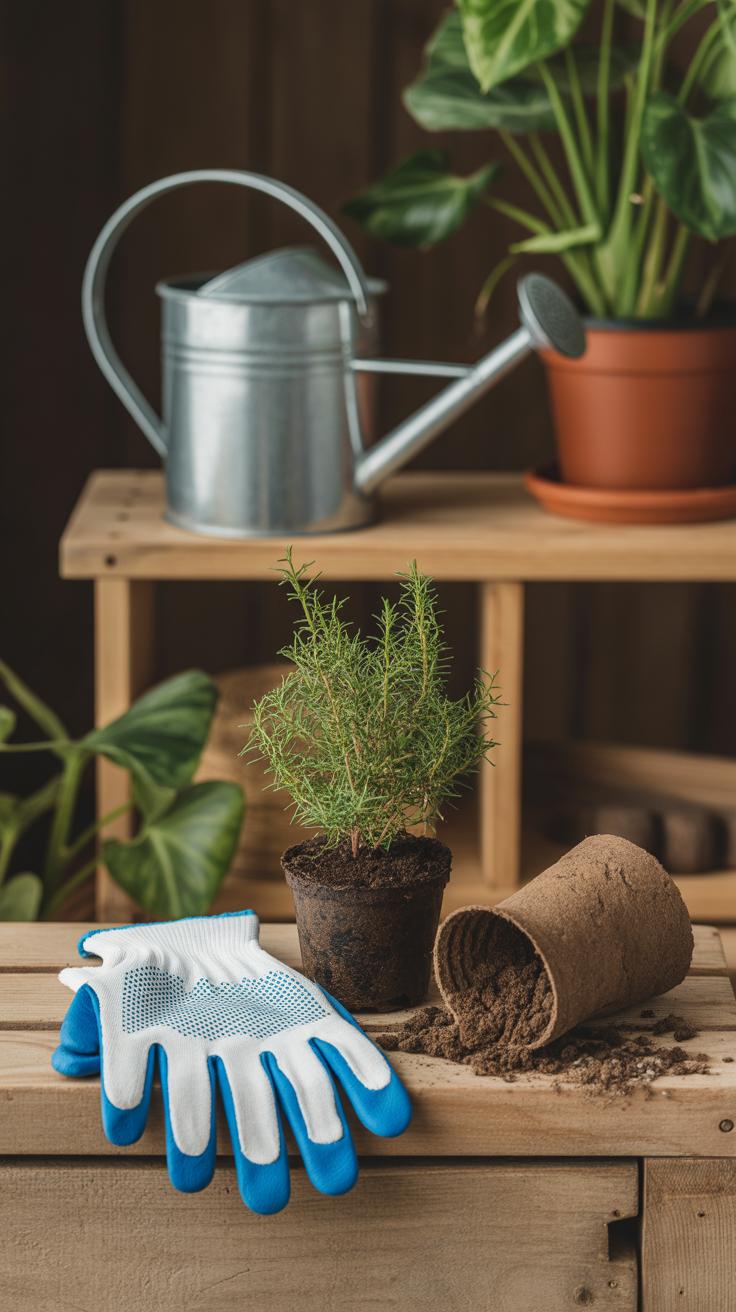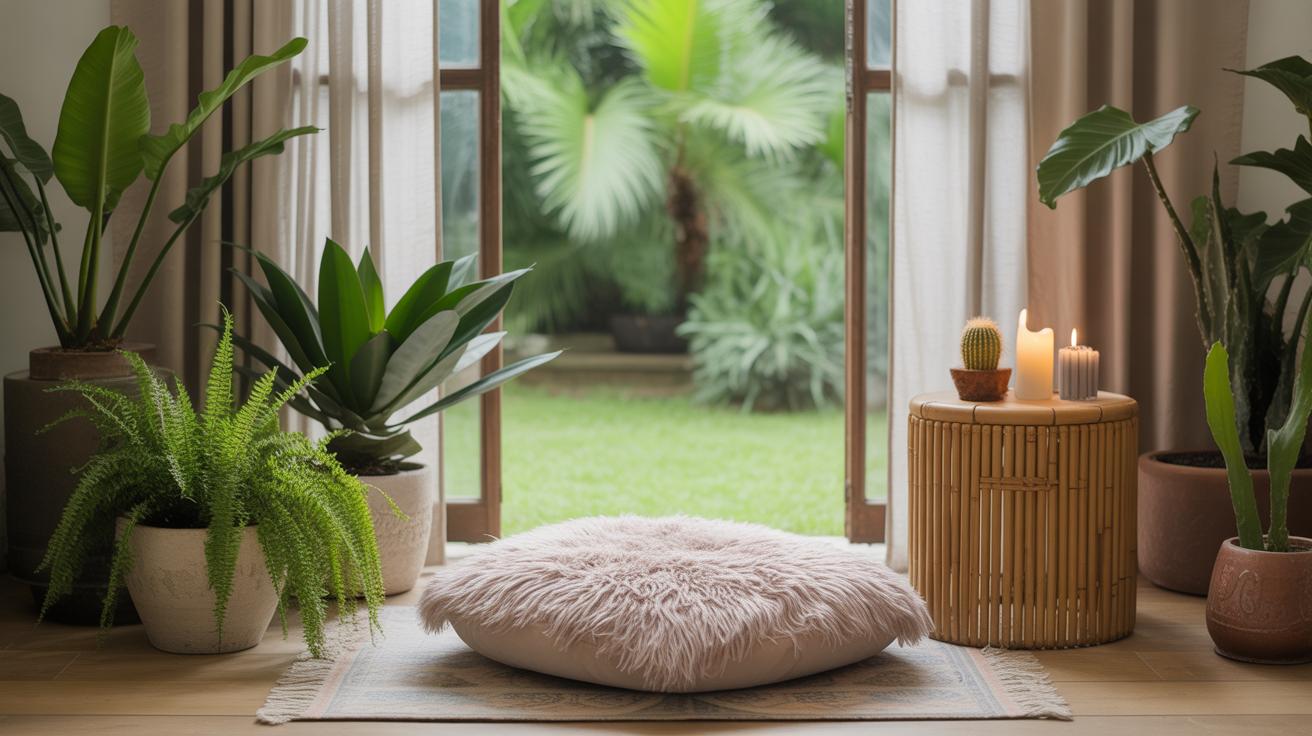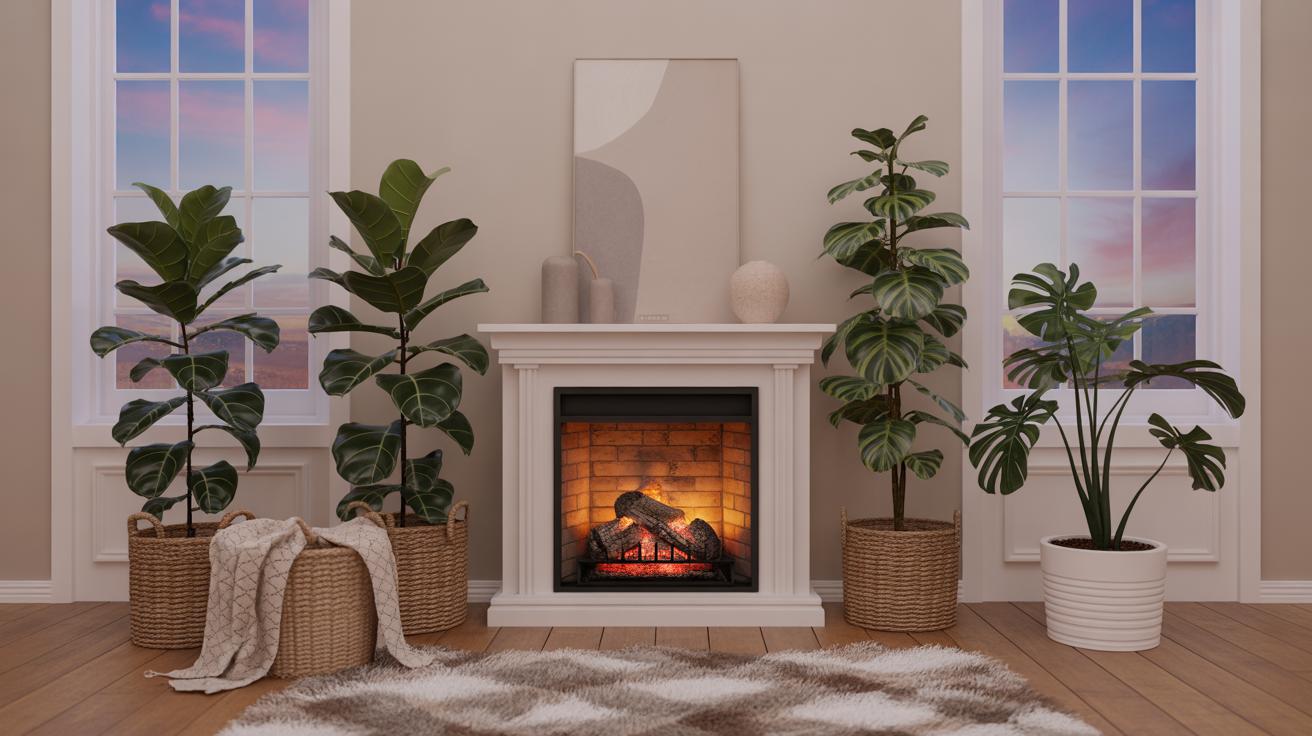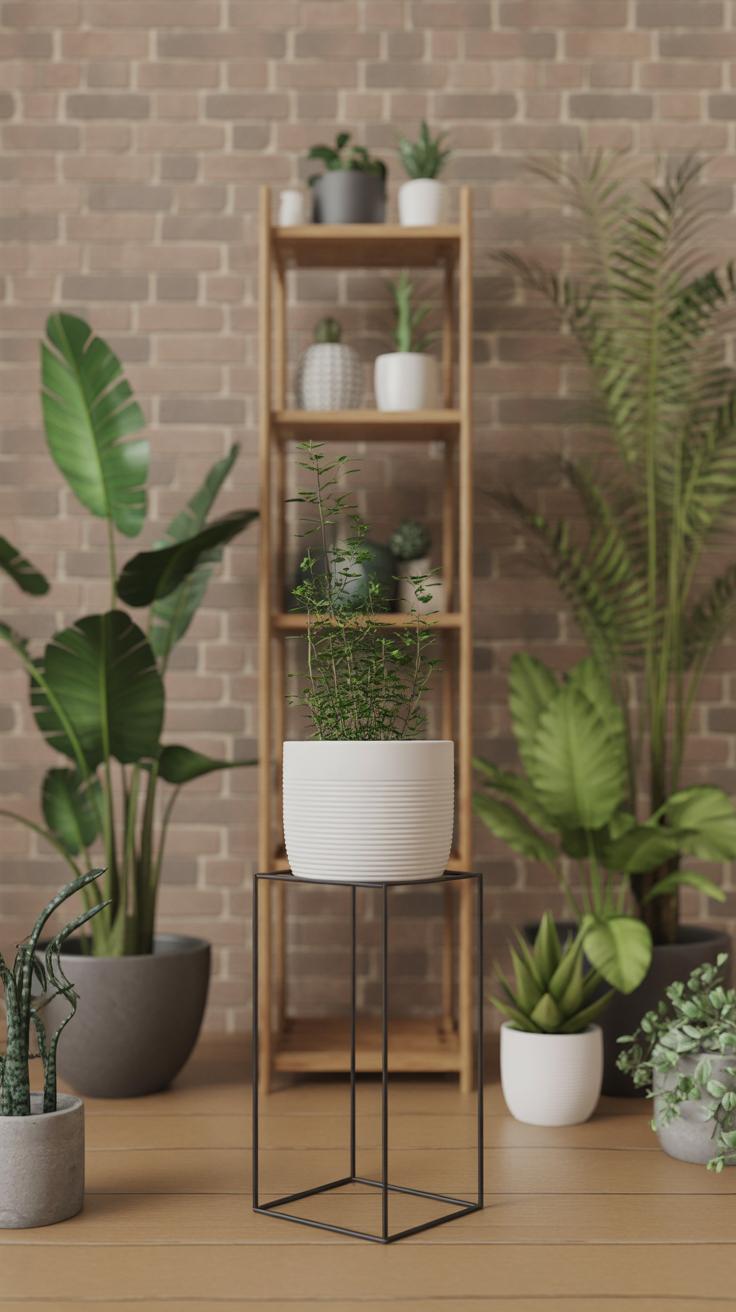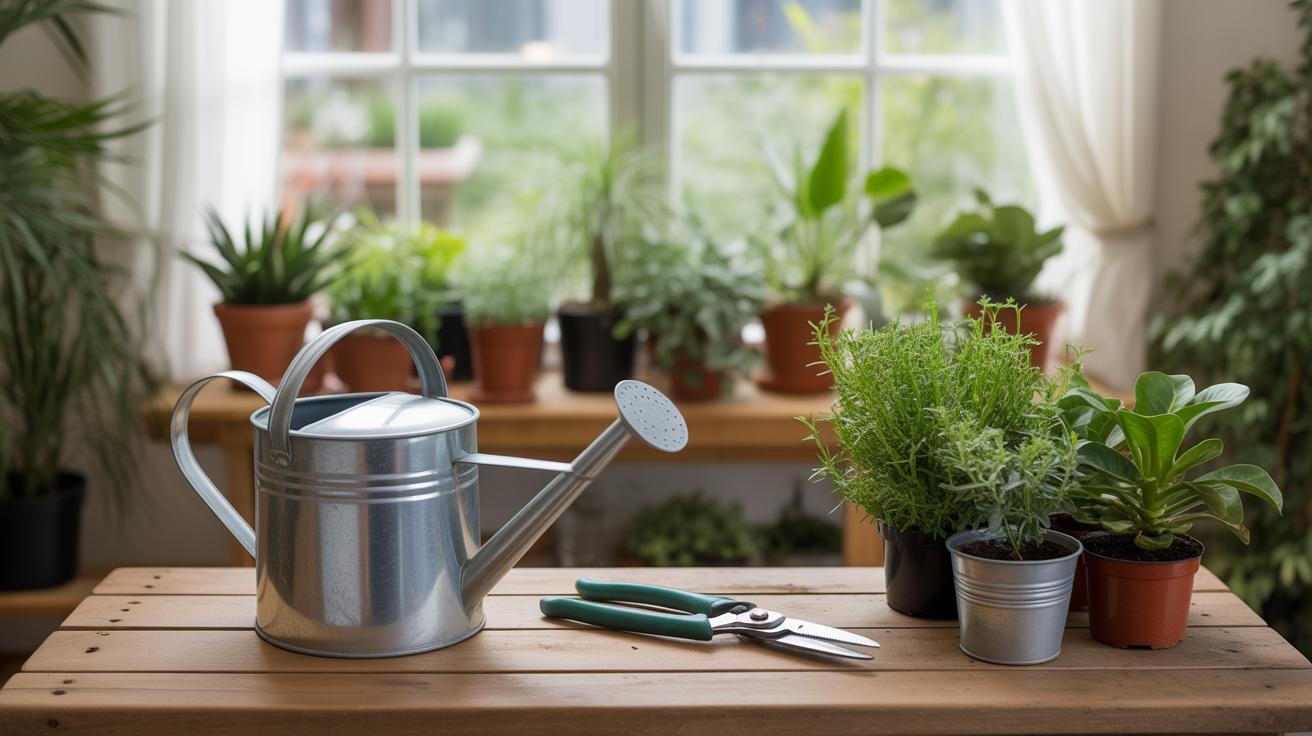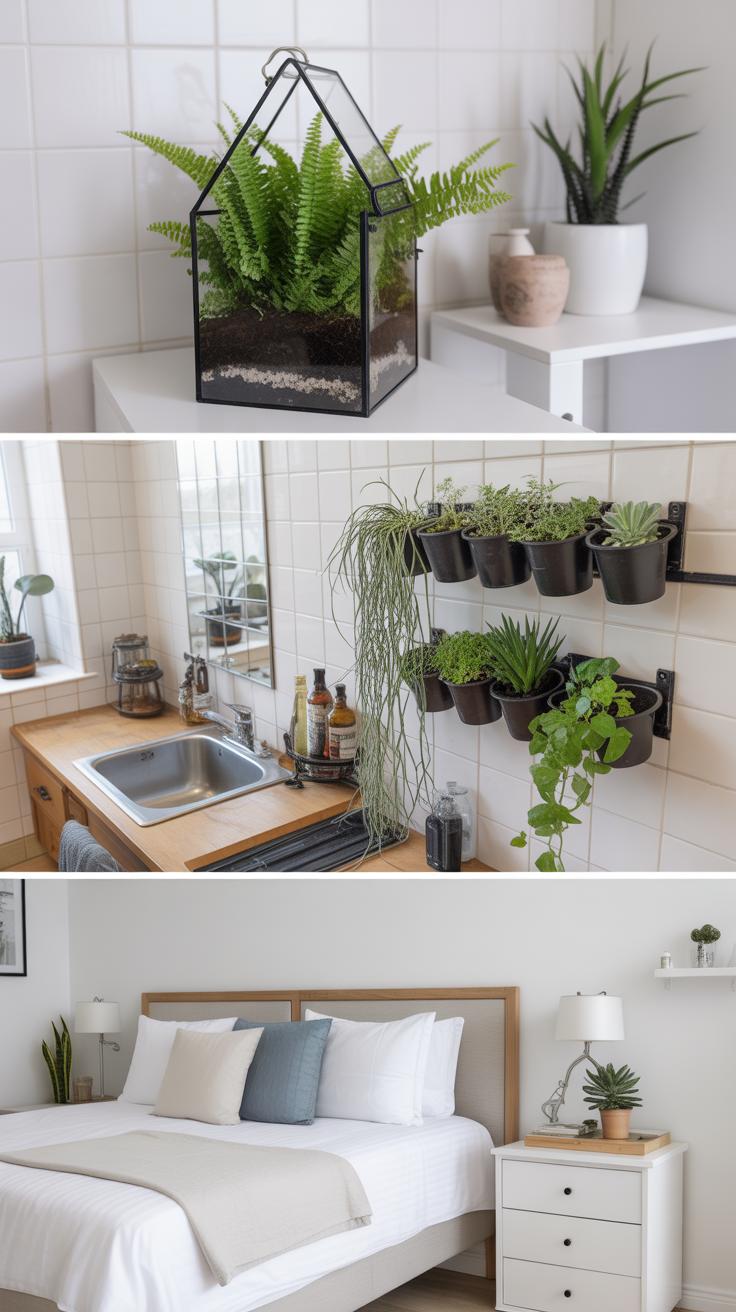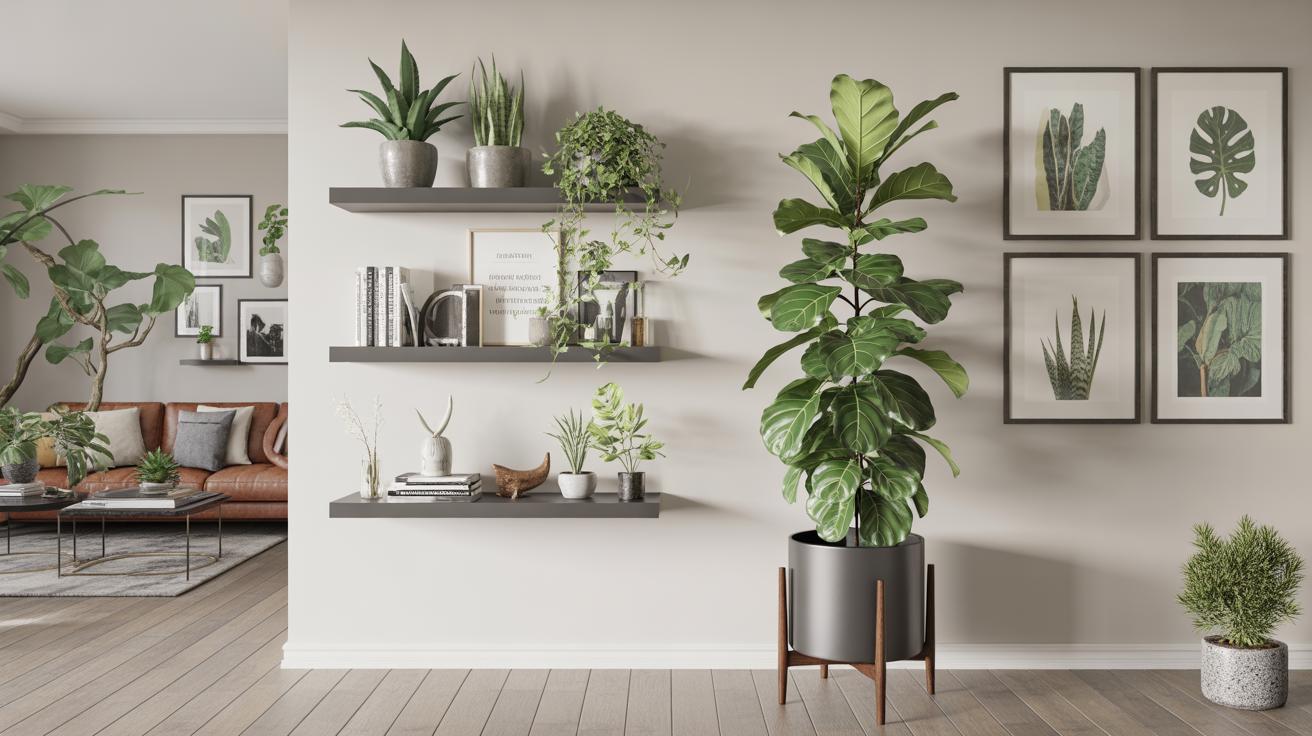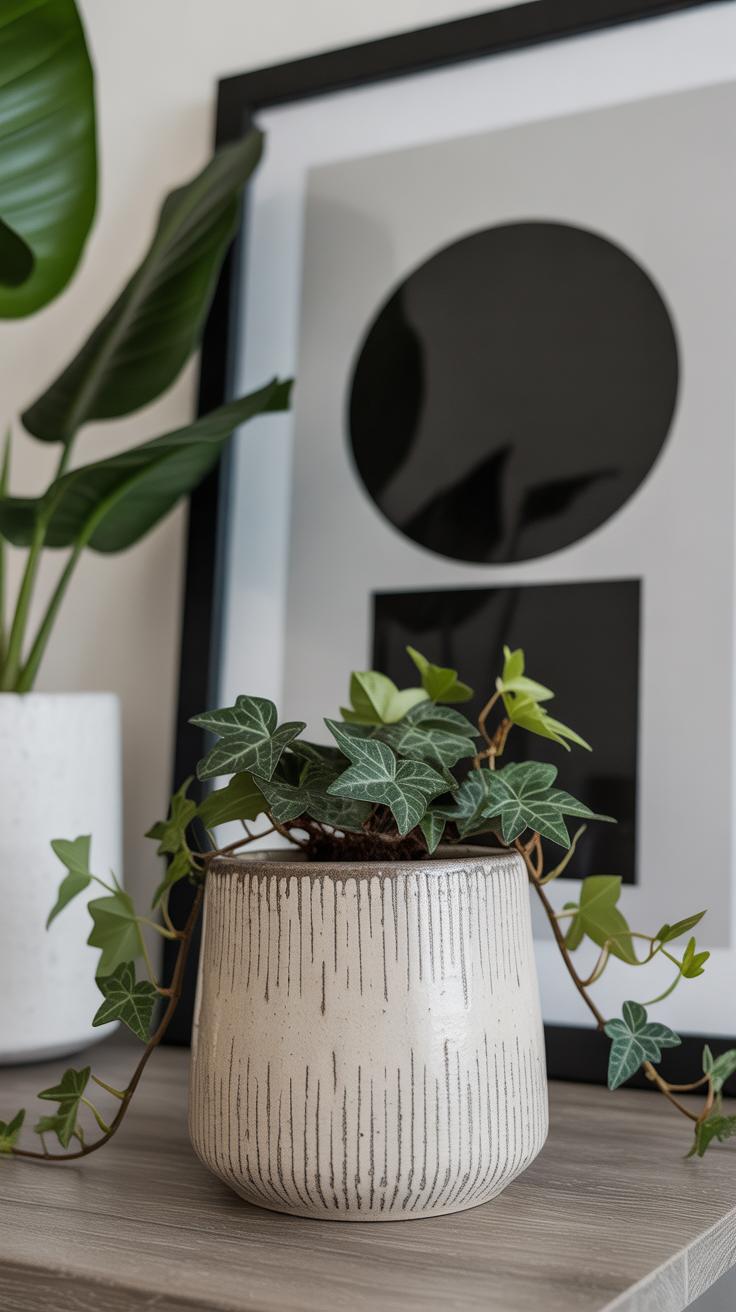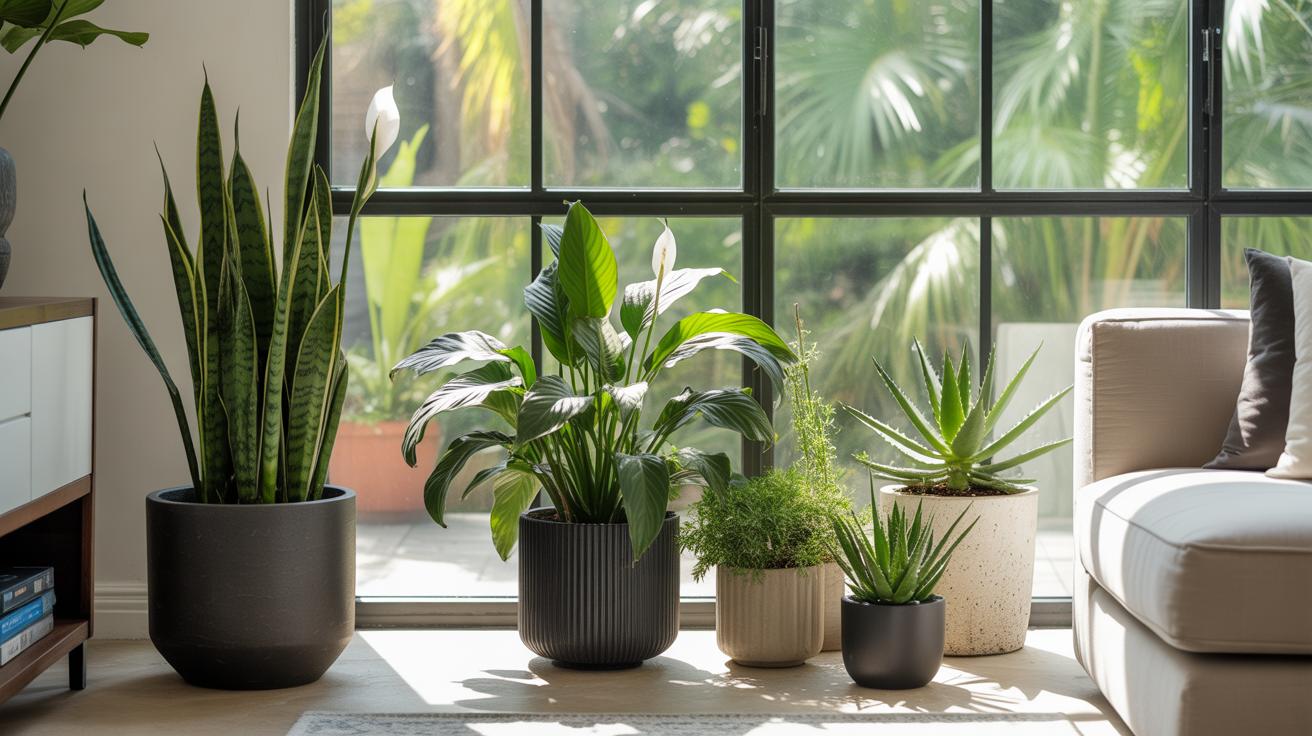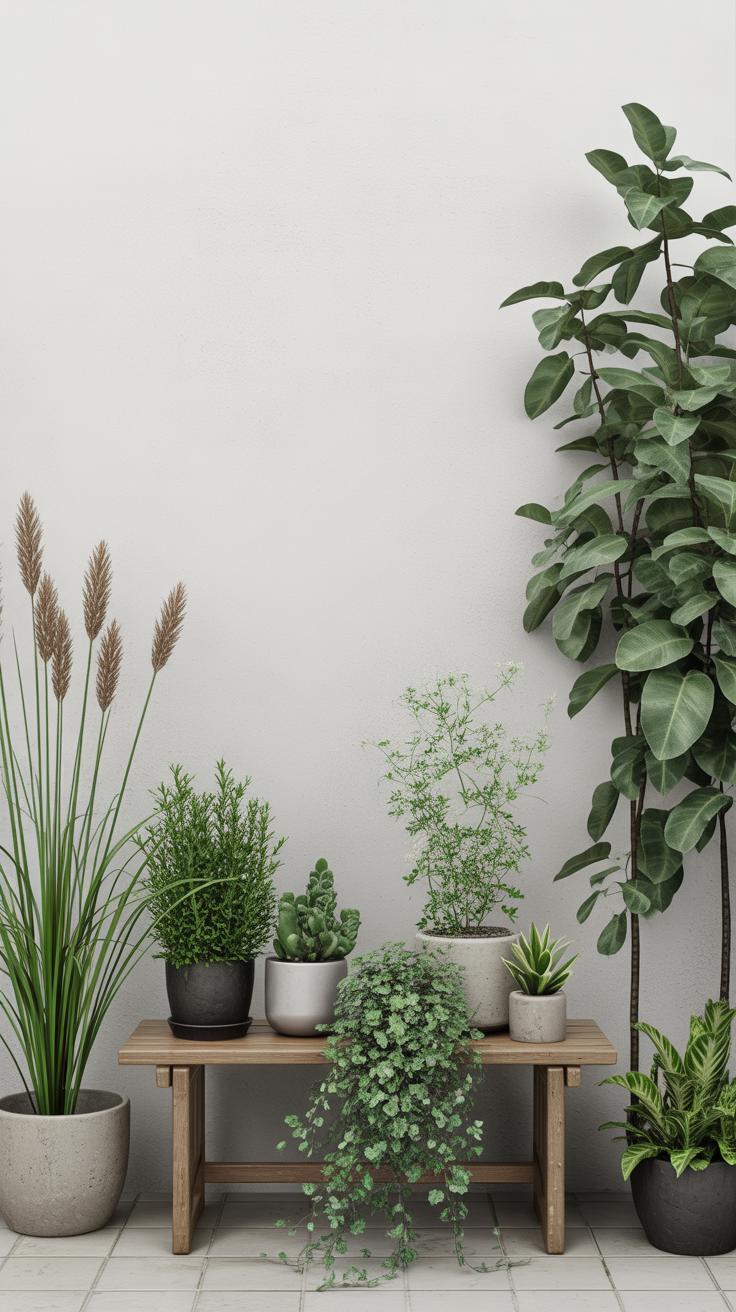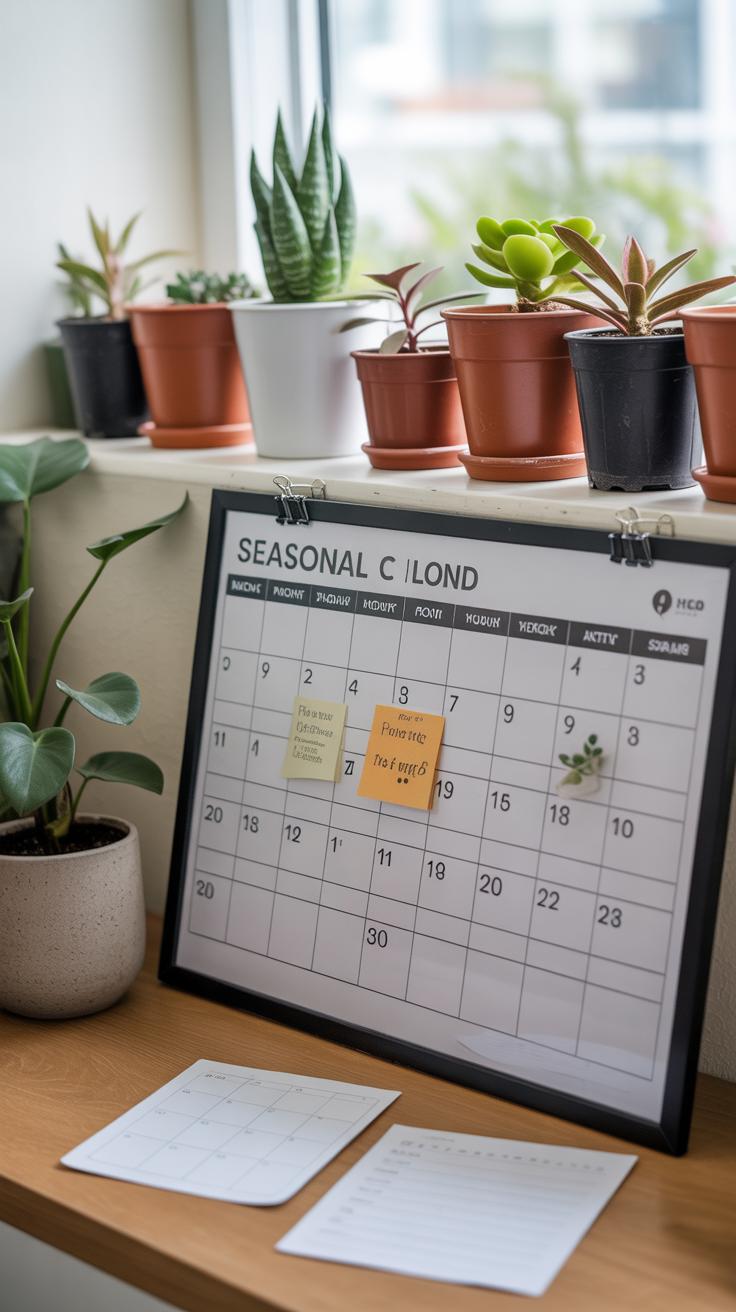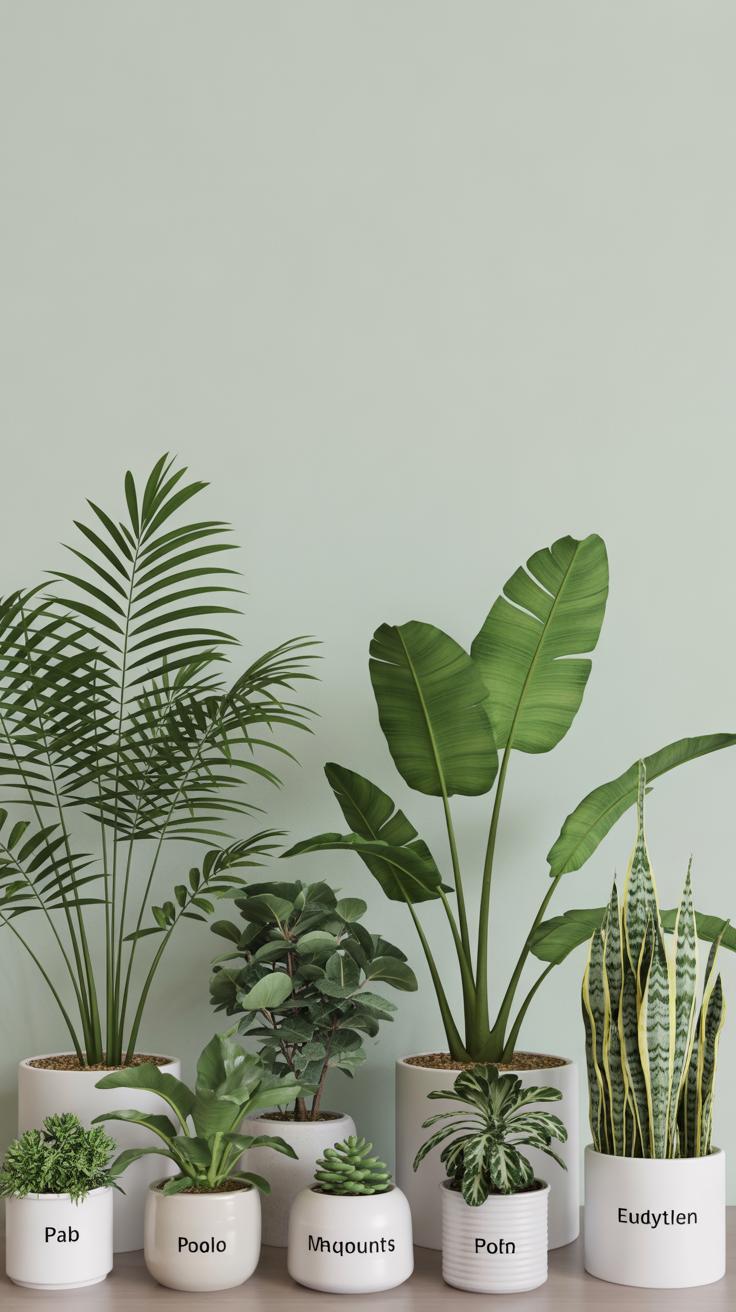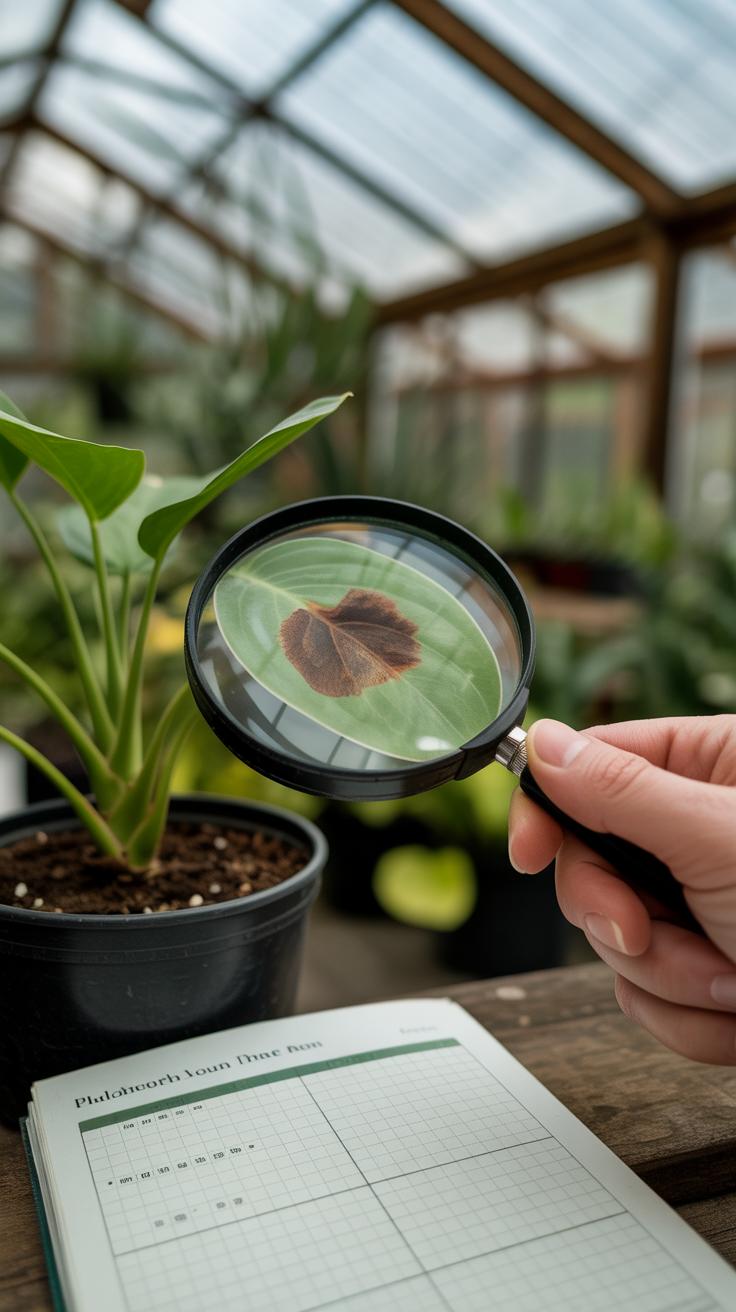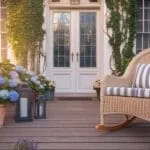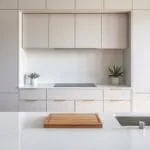Introduction
Indoor plants can bring life, color, and a fresh feeling to your home. Elevate Your Home With Chic Plant Decor Indoor Arrangements to create a welcoming and calming space. Plants help improve air quality and add a natural touch to any room.
This article explores simple to advanced ways to use indoor plants in your home. You will learn how to pick the right plants, arrange them stylishly, and care for them to keep your space green and cozy. Whether you are a beginner or have some experience, you will find useful tips to brighten your home with plants.
Why Choose Indoor Plant Decor for Your Home
Bringing plants indoors does more than just fill empty corners. It’s about creating an environment that feels alive and breathable. Plants influence the air you breathe; they gently filter toxins and add moisture. This can make a real difference, especially if you spend a lot of time inside or live in a dry climate.
But the benefits go beyond clean air. Indoor greenery seems to ease the mind. There’s something about caring for a plant or just having leaves in view that quiets stress, even if just a little. I think many people don’t realize how much a small touch of nature can shift their mood or focus.
Then there’s the look. Plants bring warmth without trying too hard. They soften sharp edges and break up monotonous colors. Whether it’s a single statement piece or a cluster of smaller pots, plants have a way of making a space feel more inviting, less sterile. It’s simple—without plants, a room can feel incomplete, like something’s missing but you can’t quite say what.
Health Benefits of Indoor Plants
Indoor plants can help with air quality by absorbing carbon dioxide and releasing oxygen. Some species also remove pollutants like formaldehyde or benzene found in household products. This isn’t just about fresher smell—the impact on air quality can be surprisingly noticeable over time.
Mental health might benefit too. Studies suggest that interacting with plants, even just seeing them, can reduce feelings of anxiety and boost concentration. You might notice feeling calmer or more patient, especially after a heavy day. Of course, it’s not a cure-all, but it’s a low-effort way to add some peace.
Taking care of plants has a meditative quality for some people. Routine watering or pruning pulls you out of a busy headspace. It’s a simple activity that encourages mindfulness, slowing down your pace in a subtle way.
Decorative Appeal of Greenery
Plants bring layers of texture and color that most furniture or decor can’t replicate. The way leaves catch light changes through the day adds an organic rhythm to any room. You might not always notice it consciously, but it can make the space feel more connected with the outside world.
There’s also flexibility. Plants fit almost anywhere—from tiny succulent arrangements on shelves to large floor plants that frame walls or windows. Mixing plant shapes and colors can create a natural focal point. I’ve seen rooms transform completely just by adding a few well-chosen plants.
More than charm, plants bring a kind of subtle vibrance. They encourage you to pay closer attention to the little things in your home. And once you catch yourself smiling at a leaf or admiring a flower, you start to see your living space in a new way.
Choosing the Right Plants for Your Space
Picking plants isn’t just about what looks nice. You need to think about the light your space gets, how much room you have, and yes—your home’s style. Maybe you have a tiny apartment with limited sunlight or a big, bright living room. Either way, the plants you choose should fit the environment, not just your taste.
Low Light Indoor Plants
Rooms without much sunlight can still look great with plants that actually prefer shade. For places like hallways or rooms with north-facing windows, try these:
- Snake Plant: It tolerates low light and forgetful watering, making it popular for beginners. Plus, its upright leaves add structure.
- ZZ Plant: It’s almost indestructible and thrives in low light, though it grows slowly. I had one survive next to a dark bathroom window for months.
- Pothos: This vine can grow just about anywhere indoors, even in dim light. It adapts and can brighten up shelves or hang from pots.
- Cast Iron Plant: True to its name, it handles dark spots and needs minimal care. If you’re someone who sometimes forgets watering, it’s a solid choice.
They won’t grow as quickly as those in sunlight, but they add subtle greenery where other plants might fail.
Plants for Bright Spaces
Rooms with lots of natural light open up more possibilities. The trick here is choosing plants that love sunlight, but some need filtered light instead of direct rays. Think about these options:
- Fiddle Leaf Fig: It’s become a design staple. This plant flourishes in bright light but gets cranky if the sun is too harsh or direct all day.
- Succulents and Cacti: Perfect if you want low-maintenance life in a sunny nook. They hate overwatering but bask in light.
- Rubber Plant: It enjoys bright, indirect light and adds a bold, deep green splash to your room.
- Bird of Paradise: A bit showy, yes. But if you have space and sunlight, it grows fast and feels almost tropical.
Not every bright spot works the same for every plant, though. Windows with sheer curtains or east-facing spots can save your plants from getting scorched.
What does your space feel like? Cool and dim or sun-filled and open? Matching plants to those conditions really makes all the difference.
Basic Care Tips for Indoor Plants
Taking care of indoor plants doesn’t have to be complicated—really, many plants are quite forgiving. Still, there are some simple routines that can help your green friends thrive rather than just survive.
First off, consistency matters. Try to check your plants regularly instead of waiting for a problem to show up. Look at the leaves, the soil, even the pot. Does the soil look dry? Does it feel soggy? These little observations can tell you what your plant needs. A plant’s mood can change fast, so don’t ignore subtle signs.
Many beginners struggle with timing their care, especially watering. It’s tempting to water on a schedule, but it’s better to water when the top inch of soil feels dry to the touch. Too much water can drown roots, while too little leaves your plant thirsty. I’ve learned this the hard way—once, I almost killed a peace lily by overwatering for weeks.
Feeding is another piece of the puzzle. During growing seasons (usually spring and summer), feed your plants with diluted, balanced fertilizer every few weeks. But indoor plants don’t need much—overfeeding can cause burnt leaf tips or stunted growth. If you’re not sure, skipping feeding is usually safer than going overboard.
Watering and Feeding Indoor Plants
When you water, aim to moisten the soil evenly rather than just drenching one spot. Water until you see it draining from the pot’s bottom, then let the pot drain completely. Avoid letting plants sit in standing water—it invites root rot.
- Check soil moisture with your finger or a wooden stick.
- Consider the plant’s light environment—plants in brighter spots generally need more water.
- Use room temperature water, which feels less shocking to roots.
- Feed plants with a balanced liquid fertilizer diluted to half strength.
- During fall and winter, reduce feeding as plants slow down growth.
Remember, every plant is a bit different, so watch how yours responds. This part is more art than science.
Managing Pests and Diseases
Indoor plants aren’t immune to pests or diseases, although problems often start small and unnoticed. Common pests include spider mites, aphids, and mealybugs, often spotted by tiny webs, sticky residue, or white cotton-like spots.
If you spot pests, act quickly. Usually, wiping leaves with a damp cloth or spraying with diluted soap water can control infestations. For tougher problems, insecticidal soap or neem oil can help, but test a small leaf first—you don’t want to shock the plant.
Fungal diseases sometimes appear as mold or spots on leaves. Improving airflow and avoiding overwatering helps prevent these. If you see mold, remove affected leaves and move the plant to a less humid spot.
Questions like “why is my plant looking sad?” often lead back to pests or care issues. Sometimes, just moving a plant to a sunnier spot or trimming dead leaves does the trick.
Creative Indoor Plant Display Ideas
Finding unique places to showcase your indoor plants can change the feel of a room more than you might expect. Using plant stands and shelves is a simple way to add height and dimension. Think beyond the usual side table—try placing plants on tiered stands or stacking them on open shelving units. This not only saves floor space but also creates a layered effect. For example, a tall fiddle leaf fig can stand proud on a wooden stand while smaller succulents cluster neatly on a lower shelf.
Using furniture creatively doesn’t stop there. Old ladders, for instance, can be repurposed as plant racks—just lean one against the wall and arrange pots on each rung. It’s casual, inviting, and offers a touch of charm without feeling overworked. I once used a small bookshelf in my living room just for plants, and it made the area feel both fresh and cozy, like a little jungle retreat.
Hanging plants can also work wonders when space is limited or you want something visually interesting. Using ceiling hooks, wall-mounted brackets, or macramé hangers adds dimension as plants cascade downward. Vining species like pothos or string of pearls look especially good this way, seeming to float in mid-air. Plus, you avoid cluttering surfaces.
You might wonder which pots to use for hanging. Lightweight options like terracotta or plastic are practical, but mixing textures or colors can create a striking look. For example, a soft ceramic planter in muted tones contrasts nicely with green leaves and the simplicity of a hanger.
What’s your space like? Do you lean toward a minimalist style or prefer a cozy, layered vibe? These choices shape how you display your plants. Playing around with stands, shelves, and hangers helps you find a balance that suits both your plants and your living space.
Incorporating Indoor Plants Into Different Rooms
Plants in Living Areas
Your living room is often the heart of the home. It’s where you relax, entertain, and spend a lot of time. So, the plants you choose here need to balance style with ease of care. Consider larger statement plants like a fiddle leaf fig or a monstera. They add height and visual interest without demanding too much attention. Placing them near natural light sources works best, but don’t feel you must plant them right in front of a window; these plants tolerate some indirect light.
Smaller plants can fill empty corners or coffee tables—think snake plants or pothos. They’re forgiving and look fresh. Grouping plants in odd numbers adds a casual yet intentional vibe. One tip I learned is to mix textures and pot heights to avoid a static feel. It’s not about perfect symmetry, but rather about achieving a relaxed composition that feels welcoming.
Plants for Kitchens and Bathrooms
Kitchens and bathrooms can be tricky because of steam and moisture. That’s where moisture-loving plants really shine. Ferns and peace lilies enjoy the humidity, making them perfect companions in these rooms. I once put a Boston fern on my kitchen windowsill, and to my surprise, it thrived despite the occasional heat from cooking.
Placement matters here—you want plants where they get some light but aren’t in the way of daily tasks. Hanging planters near the sink or window can free up counter space and make good use of vertical areas. In bathrooms without windows, try low-light tolerant plants like snake plants or ZZ plants. They’re resilient and add a touch of green without demanding sunlight.
Do you think about how the plant’s needs fit your routine? A plant too picky for the bathroom won’t last, no matter how pretty it is. Keeping practicality in mind makes your plant decor sustainable and enjoyable.
Using Planters and Pots to Enhance Decor
Choosing the right planter can feel like a small detail, but it often changes the whole vibe of a room. You might find yourself drawn to ceramic pots because of their weight and texture—they feel solid and timeless. On the other hand, plastic planters are lightweight and super practical, especially if you move plants around a lot, though they sometimes look less polished. Metal pots bring a modern edge, yet they can get warm near windows or radiators, which may bother some plants.
Each material comes with its quirks. Ceramic can crack if overwatered. Plastic might not breathe well. Metal might rust or overheat. Even wood planters add a natural warmth but need sealing against water damage. Sometimes, a pot’s look overshadows its function, so knowing which plants suit each material can help avoid surprises.
When it comes to matching planters with room style, think beyond just color. A glossy white ceramic pot suits minimalist and airy spaces, while terracotta fits rustic or earthy rooms. Bright, patterned pots can add personality in creative or eclectic spaces. Matching planter shapes to furniture or décor styles subtly ties the room together—you might choose clean, geometric planters for a modern room but rounded, organic shapes for cozy spaces.
Do you want your planters to stand out or blend in? Sometimes keeping them neutral feels safer, but a bold container can become a focal point. I once picked a brass planter for a monochrome room, and unexpectedly, it made the whole space feel richer and less flat. Play around with textures and colors—it’s rarely just about the plant itself, but the whole look it creates on its own.
Combining Plants for a Balanced Look
Creating a balanced indoor garden often means mixing and matching plants in a way that feels natural, yet thoughtfully arranged. You might start by choosing plants of different sizes—tall ones like fiddle leaf figs or snake plants paired with smaller ones like pothos or succulents can add both scale and interest. It’s not about perfectly symmetrical arrangements but rather letting some plants stand out while others gently complement them.
Leaf shape and color can really change the vibe of your space. Try pairing broad, smooth leaves next to narrow, spiky ones. For example, a monstera’s big splits look striking alongside the fine, delicate fronds of a maidenhair fern. When it comes to color, combining dark green leaves with variegated or lighter shades creates depth that flat, uniform greens simply can’t achieve. You could even mix in plants with reddish or purple foliage just to shake things up a bit.
Height and texture play a big role too. Arrange taller plants at the back—or in corners—while spreading out lower or cascading ones toward the front or edges. Rough textures mixed with glossy, smooth leaves soften the overall look. Don’t hesitate to cluster plants with similar textures in one spot while contrasting elsewhere. It may feel a little random at first but that’s often what makes a display visually interesting.
Think about how you want your indoor garden to feel—lush and wild, or neat and curated? Your choices in mixing leaf shapes, colors, heights, and textures can help you find that balance, even if it means breaking a few “rules” along the way. What kind of impression do you want your plant collection to make in your home?
Caring for Your Plants Year Round
Adjusting Light and Water in Different Seasons
Indoor plants don’t stay the same through the year, and neither should your care routine. During winter, shorter days mean less natural light. Plants might slow down and need less water overall. If you keep watering like it’s summer, roots can rot or mold might develop. So, maybe reduce watering frequency and watch the leaves closely for signs of stress or dehydration.
When spring and summer come around, light increases and most plants start growing faster. This means they usually need more water and sometimes more light. A south-facing window becomes a favorite spot again, but it’s easy to accidentally overexpose sensitive plants. You might find yourself moving pots back a bit or using sheer curtains – whatever works for your specific plants.
Repotting and Pruning Tips
Repotting feels like a hassle sometimes, but it’s necessary when roots outgrow their space or soil becomes depleted. Spring is usually best since plants are most active then. You’ll know it’s time if roots start poking through drainage holes or the plant appears stunted despite regular care.
Pruning, on the other hand, can be more flexible but tying it to growth cycles helps. Trim dead or yellowing leaves whenever you spot them to keep things tidy and allow energy to go to healthy parts. Some plants flower better after a little trim, and others just appreciate it to keep their shape.
When pruning, avoid cutting too close to the main stem – a small inch makes a difference. Also, try to use clean, sharp scissors; I’ve ruined a few leaves with dull blades, which just stresses the plant unnecessarily. Remember, plants aren’t machines. They might respond differently depending on timing, conditions, or even their mood, it seems.
Popular Indoor Plants and Their Features
Some indoor plants seem almost made for homes, each with distinct qualities and varying care needs. Take the snake plant, for example. It’s tough, tolerates low light, and doesn’t demand frequent watering. Great for beginners or busy folks who might forget an occasional watering.
Pothos is another popular choice. Its trailing vines can fill empty corners nicely, and it’s forgiving if light or water isn’t perfect. Plus, it cleans the air, which feels like a bonus that never gets old.
Moving to more experienced growers, the fiddle leaf fig often comes up. It shows off big, glossy leaves that really catch the eye, but it can be fussy about light and water consistency. It’s also prone to dropping leaves if conditions shift even slightly.
Monstera deliciosa gives a dramatic look with its iconic split leaves. It needs moderate to bright indirect light and steady moisture levels. Not the easiest, but worth the effort if you want a tropical vibe.
Philodendrons vary widely, but generally, they prefer moderate light and regular watering without waterlogging their roots. The heartleaf philodendron is fairly easy, whereas hybrids like the “Pink Princess” demand more attention.
These differences mean you might lean toward one because it fits your lifestyle and space. Or… maybe you’re willing to tinker with care routines for that rare gem of a plant.
Easy Care Plants for Beginners
Snake plants and pothos typically top the beginner-friendly lists—and for good reason. They tolerate neglect better than most, and grow well in less-than-ideal lighting.
- Snake plant: Needs watering only when soil is dry, can handle dim spaces, and grows upright, making it good for tight spots.
- Pothos: Thrives in varying light levels but prefers indirect light. Water when soil starts to dry out. Its vines will trail attractively from shelves or hanging pots.
These two are forgiving. They respond well to casual care but also show signs when they need a bit more attention. That makes them ideal if you’re just testing the waters of indoor gardening.
Showy Plants for Experienced Plant Lovers
If you enjoy a challenge—whether for the aesthetic payoff or simply the gardening experience—certain plants stand out. Take calatheas, for instance. Their leaf patterns are striking but can sulk if humidity dips too low.
Or consider the fiddle leaf fig again. It demands bright, indirect light and consistent watering; slight neglect shows quickly.
Some orchids are another category. Their flowers last long but require precise watering and light balance.
These plants reward patience and care with looks that can genuinely elevate your space. But they aren’t for everyone. Still, if you find yourself intrigued by their needs, it might be worth trying one—just be ready for some trial and error.
Troubleshooting Common Indoor Plant Issues
Yellow Leaves and Wilting
Yellow leaves often make you wonder what’s wrong with your plant. Sometimes it’s simple—too much water can drown roots, causing leaves to yellow and drop. Other times, the problem might be a nutrient deficiency, mainly nitrogen, showing up as faded, limp foliage. If your plant’s wilting, check the soil moisture. Dry soil leads leaves to curl and droop, but so does overwatering. It’s tricky because wilting looks similar in both cases.
Try these steps to help your plant recover:
- Feel the soil before watering—if it’s wet, hold off; if dry, give a moderate drink.
- Look for brown spots or mushy roots by gently removing the plant from its pot.
- Use a balanced, gentle fertilizer if yellowing spreads and leaves become limp.
Sometimes leaves yellow naturally as part of the plant’s cycle, especially older ones. Don’t panic if a few turn yellow before dropping, but watch closely for sudden widespread color changes.
Dealing With Bugs and Mold
Pests like spider mites or aphids usually hide under leaves or at stem joints, sucking sap quietly. You might notice speckled leaves or sticky residue. Mold shows as fuzzy patches on soil or leaves, often a result of high humidity and poor air circulation. Both can make your plant look unhealthy fast.
Try these tactics to get rid of bugs and mold:
- Wipe leaves gently with a damp cloth or spray with mild soapy water.
- Isolate the affected plant to avoid spreading pests or mold.
- Improve air flow by opening windows or using a fan in the room.
- Repot the plant if mold seems rooted in the soil, using fresh, well-draining potting mix.
Dealing with bugs can be tedious. I’ve found that persistence matters more than quick fixes. Spray treatments might need repeating over several days. Also, think about the room’s environment—sometimes correcting watering and lighting habits stops problems before they start.
Conclusions
Bringing plants into your home offers more than beauty. They create an atmosphere that is peaceful and inviting. You can start with easy-to-care-for plants and find your style for arranging them. Your space will look fresh and unique.
Remember, caring for indoor plants is simple if you follow some basic rules. Experiment with different plants and setups until you find what suits your home best. Enjoy the process and the benefits of having a greener, healthier home.

